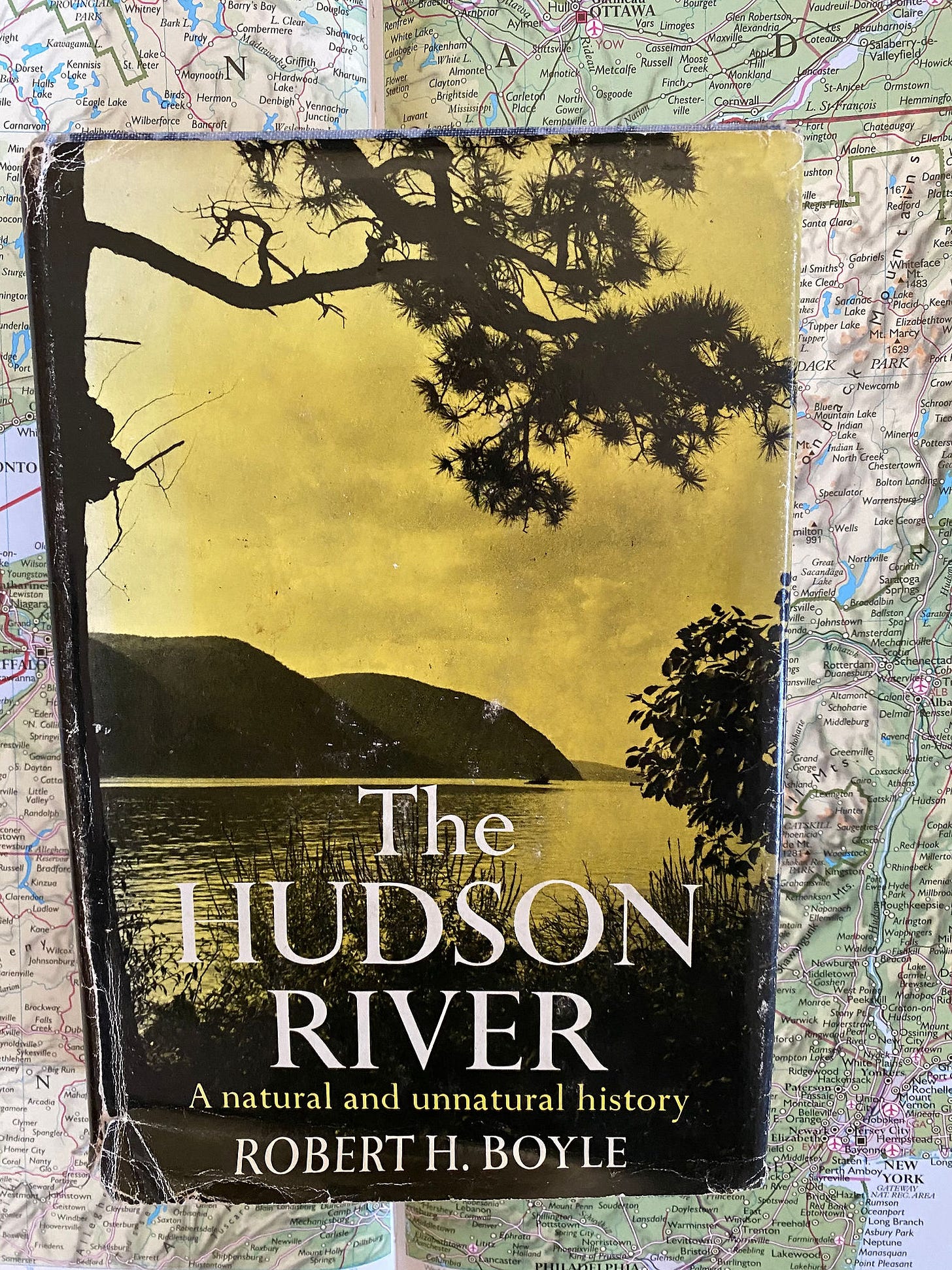Review of THE HUDSON RIVER: A Natural and Unnatural History
A 52 year old ode to a river and a real shot of perspective ...
My cousin wants to take a fall trip up the Hudson. It has taken on an existential urgency during this “time out” year. One reason I may find myself on a small boat in the upstate New York in the fall of 2021 is this out of print little gem my cousin sent me as part of the pitch for the trip. I was ready for just such a book.
Written in 1969, the Robert Boyle's Hudson was only a few years younger than the one I began to become acquainted with when my family left Northern California for New York. It was a river that caught my imagination from the beginning. I ‘flat sat’ a corner apartment on the very Upper West Side in my early twenties and was each day beguiled by its grandeur. I ran most evenings in a not entirely safe Riverside Park and was nearly killed on the Hudson River Expressway. Its noble presence sparked a life long interest in the Hudson River School of Art that was reinforced by visits to Hyde Park, bird watching on the cliffs of the Palisades and endless references to her storied past as I became more and more familiar with American History. The book is dated. The pollution crisis has abated to a great extent. Con Edison lost its massive battle to suck the river into her power generators. The river is more popular and cleaner than it has been in almost 100 years. I do not write this as a “plug” for the book (though it would be worth your while to find it), rather as a thank you note.
Thank you for reminding me of the life saving role good government regulation has played in our lives. Reading his very clinical descriptions of the massive pollutants being spilled into the river by industrial plants and shoreline towns and cities was shocking. Most everything went in untreated, including our sewage. The fish kill was enormous, the river stank and parts of it were literally covered in shit. This was in the Sixties before the Clean Water Act federalized what had begun at the state and local level. The results with the Hudson and across the nation are one of the great overlooked achievements by our government and by organized civic groups. The fact that much of the change was fought each step of the way by private interests and conservative whack-jobs might seem unimaginable given the net result; however, I suspect much less unimaginable given the refusal of many to acknowledge climate change, a similar obvious horror unfolding in front of our faces.
Thank you for capturing the awe of geological time. Around 100,000 years ago during the Ice Age, the Hudson River ran 120 miles out into the Atlantic. In the Precambrian time, the Adirondacks were not the ancient sleepy mountains they are today; rather, they were peaks as high as our Himalayas. The Hudson River is a natural museum, its cliffs, its mountainous origins all part of a mosaic of geologic time. It has a relationship with the sea that stunned me. The salt-water tides swing almost six miles up the river and the fish life is a mixture of ocean and river life.
Thank you for your love and enthusiasm for life on a river. The book is a nature guide to the river. Boyle spares no detail when it comes to describing his favorite fish and the flora and fauna of the river. Even amidst the near pollution extinction event within which this book was written, Boyle describes the abundance of nature and its great complexity with the clearness and immediacy of a man whose life is inextricably woven into the river. Who knew that many of the East Coast fish that sportsmen enjoy with such relish (like stripers) originate in the shorelines of the Hudson. Who knew that at one point in the early 19th century, over 50% of the world’s oysters were clinging to her shores.
Much of this might seem a bit obscure or only distantly relevant. Strange though how reassuring such information is. Robert Boyle’s love of the river and his clear unadorned prose acts as a headwaters for a book that brings, even half a century later, a great and beleaguered river to life.
The Hudson River: A Natural and Unnatural History
by Robert H. Boyle (1969)
282 pages (including great photos and maps)


